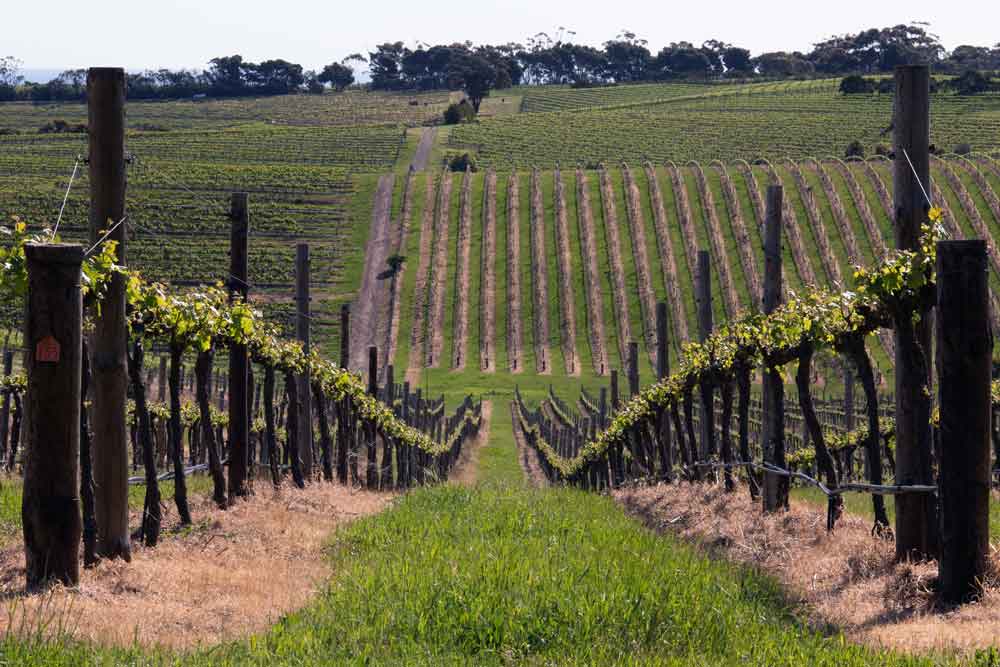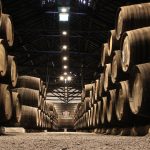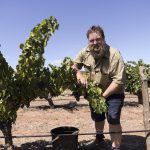By Stephen Strachan, Director, Gaetjens Langley
First published in the May/June 2018 issue of the Wine & Viticulture Journal
The marketplace for vineyard and winery acquisitions in Australia has reached a point where there is renewed and, in some cases, substantial competition, writes Stephen Strachan in his annual review of this market for the Wine & Viticulture Journal.
BACKGROUND
The market for the acquisition of vineyards, wineries and wine businesses has generally followed the commercial prospects for the broader wine industry over the past decade. Prior to about 2012 the majority of transactions – whether vineyards, wineries, brands or vertically integrated businesses – were influenced by the volume of distressed assets in the marketplace and, in the case of brands, by the low levels of profitability.
In these instances, assets were traded against benchmarks for asset values rather than on earnings multiples as, in most cases, earnings were too low to justify any earnings-based valuation.
More recently, the marketplace (for acquisitions) has responded to several key drivers across the industry:
- The gradual reduction of excess inventory which had been putting a ceiling on bulk wine prices, particularly generic or South Eastern Australia (SEA) wine.
- The reduction in distressed asset sales. Most assets in this class had turned over, and some were probably experiencing improved financial returns.
- The strong investment by several wine companies (in particular Treasury Wine Estates/Penfolds) in securing supply by acquiring vineyards for their fine wine brands. This was initially led by acquisitions in the Barossa Valley, followed by McLaren Vale.
- The emergence of Chinese buyers as purchasers of premium vineyards and winery sites and brands, again initially and primarily in the Barossa Valley, however, also in other regions in close proximity to capital cities.
CURRENT STATUS
The marketplace for acquisitions has now reached a point where there is renewed and, in some cases, substantial competition. This varies across asset types, and across regions. Notably, in many cases where established and longstanding wine companies are showing interest in these assets, perceptions of value are still being framed by valuations over the past decade or so— whereas new entrants are adopting a new valuation paradigm and regularly winning out. In other words, different buyers have different views about the upside and assets tend to trade with those that have a more optimistic view of the upside.
ASSET CLASSES
Vineyards
Vineyard sale values typically reflect the marketplace for wines from those regions.
In this regard, the standout (Tier 1) regions are the Barossa Valley, McLaren Vale, Yarra Valley, Margaret River, Mornington Peninsula, Hunter Valley and Tasmania, and these regions are fairly closely aligned with the market for regionally branded wine from Australia. Mornington Peninsula and the Hunter Valley demonstrate strong results, however, there is clearly a real estate premium built into many of these sales over and above the value of the vineyards.
The Coonawarra warrants specific comment. A decade ago Coonawarra would have been considered a Tier 1 region, however, sales evidence of vineyard values indicates that this region has not shared in the vineyard price recovery experienced in the Tier 1 regions. This is likely to be a result of the relative weakness of Australian Cabernet Sauvignon in the market at the moment, and also of the limited traction that the regional brand leaders have been able to gain, notably the TWE businesses of Wynns and Lindeman’s. From buyers, there is also a clear distinction in Coonawarra between the terra rossa vineyards and the so-called transitional soils. Until recently, there have been few transactions of the tightly-held vineyards on the prominent terra rossa strip. A significant sale earlier this year of the Wetherall vineyards may mark the turning point for this region, though the gap between the genuine terra rossa vineyards and the rest is likely to remain quite large.
Tier 2 regions such as Clare Valley, Wrattonbully, Padthaway, Heathcote, Orange, Mudgee, Great Southern are only just starting to show signs of sharing in the vineyard price resurgence. In all likelihood, improvements in these regions are being driven by the relative disparity in vineyard values with Tier 1 regions, rather than by a genuine regional brand-led marketplace demand for wine from these particular regions. In our view, there will be improvement in values going forward, but the driver will be the shortage in supply in Tier 1 regions.
Interestingly, there would appear to be genuine recovery in vineyard prices across the warmer climate commercial regions of Riverina, Murray Valley and Riverland. Our firm is dealing with several parties that have identified vineyard acquisitions in these regions as a priority. We are receiving buyer interest from Chinese parties for the first time across these regions, and our view is that these buyers have recognised that inexpensive South East Australian (SEA) bulk wine is no longer available and is unlikely to be available in the near to mid-term. These parties have typically established significant volumes of business on the basis of excess supply, and are reasonably vulnerable in a tightening market.
A little over a year ago, these vineyards would have typically traded at around $20,000 per hectare, inclusive of water. At the time, water was valued at approximately $2800 to $3000/ML, so these vineyards were trading at around $3000 to $5000 per hectare exclusive of water. Current evidence is that vineyards in good condition are trading at more than $25,000 per hectare (without water) and, in some cases, more than $30,000 per hectare. And, with permanent water prices currently at $3200/ML the overall transaction is approaching $50,000 per hectare if permanent water is included. This is still below the cost of setting up a greenfield vineyard with full permanent water allocation, but nonetheless is a dramatic shift across these regions within a short time period.
Notable vineyard sales over the past 12 months or so have been:
- Connor’s Farm, in McLaren Vale, June 2017 – a 102-hectare vineyard with significant extra water allocation sold to Treasury Wine Estates for a reported $10m, or around $80,000 per hectare once extra water and other assets are taken into account
- Owen’s Own Vineyard, in Greenock, Barossa Valley – a 16-hectare red grape vineyard sold for $140,000 per hectare in February 2017 to an international buyer. Premium Barossa red grape vineyards have been selling at more than $100,000 per hectare, with the Radford vineyard selling at $225,000 per hectare in September last year
- Amadeus Vineyard, in Margaret River, sold for more than $100,000 per hectare
- Several vineyard sales in the Riverland, South Australia, between 20ha and 150ha at around $25,000 per hectare or more
- Wetherall Vineyard sale in Coonawarra, with high-end terra rossa blocks sold at more than $100,000 per hectare.
Wineries
The improvement in vineyard values has not yet fully translated into improved values for processing winery sales. There is still excess capacity in winery processing, particularly in large format processing facilities.
Shaw Family Vintners was sold to the Casella Wine Group in early 2017 for an undisclosed (but in all likelihood, probably low) price and included a 400-plus hectare vineyard and a 100,000-case winery.
Shortly afterwards Ryecroft Winery, in McLaren Vale, was sold to Seppeltsfield. This is a significant asset with approximately 30,000 tonne processing capacity, 21ML of storage and about 40 hectares of vineyard as well as water allocations.
The sale of the Quelltaler winery with 360 hectares of vineyard to Seppeltsfield in October 2017 was at an undisclosed price. Whilst it was unlikely to be at a premium to the market, it nevertheless marks a turning-point for the Clare region and may signal some much-needed future investment for the region.
Shortly after, the sale of an 80% stake in the Clare Valley-based Kilikanoon winery was announced to Chinese-based Changyu Pioneer, a significant player in the Chinese wine industry with more than 20,000 hectares of vineyard.
OUTLOOK
The outlook for transactions will be influenced by the commercial returns for the respective businesses in the value chain. While prospects in China remain strong, and in a reasonably benign exchange-rate environment for Australian wine, all of the signs point to improvements in values. Shorter term factors such as a lower 2018 crop in Australia, in conjunction with the low 2017 grape crop in Europe, will continue to fuel the immediate shortage and support rising grape prices and, therefore, vineyard values.
For vineyards we anticipate continued strengthening in the Tier 1 regions, as brand-owners seek out finite and scarce vineyard supply. For Tier 2 regions, the overall tightening in supply will favour improvement in values for these assets.
Recovery in vineyard values supplying SEA-type grapes will also continue, however, competing water users (almonds, other horticulture) will continue to limit new developments across this group. We would anticipate further trading of vineyards but note that large vineyards are reasonably tightly held. For those seeking to secure fruit from these regions, structural impediments still exist, with large numbers of small vineyards and, in many cases, vineyards that have become run-down and require substantial recovery work.
For winery processing, demand will be regionally specific and, in most cases, buyers will be searching for small-lot premium production facilities. Large production facilities remain underutilised and it is difficult to see any substantial change in valuations in this category any time soon. Demand for brands mirrors the demand for vineyards in most cases. Brands from the right regions with supply security and demonstrated profitability will continue to be in demand.
















